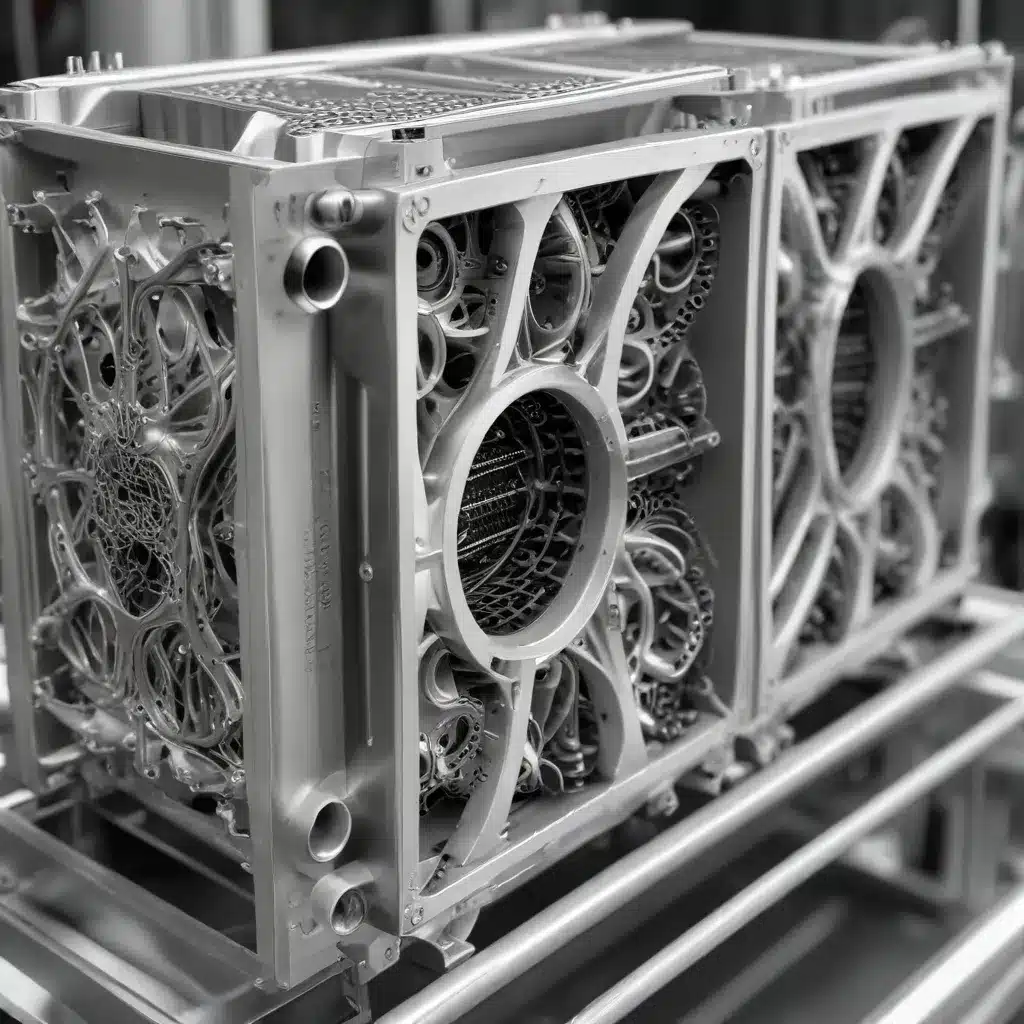
Unlocking the Potential of 3D Printing for Optimized Heat Transfer
In the ever-evolving landscape of industrial technology, the application of additive manufacturing (AM), commonly known as 3D printing, has emerged as a transformative force in the world of air-cooled heat exchangers. This revolutionary approach not only allows for the creation of complex geometries but also enables the customization of internal flow networks, ultimately leading to enhanced heat transfer performance and improved sustainability.
The Rise of Additive Manufacturing in Heat Exchanger Design
Traditionally, the design and manufacturing of air-cooled heat exchangers have been constrained by the limitations of conventional techniques, such as stamping, casting, or welding. These methods often struggle to accommodate intricate internal structures, which are crucial for optimizing heat transfer. However, the advent of 3D printing has unlocked a new realm of possibilities, empowering engineers and designers to reimagine the very foundation of heat exchanger design.
One of the primary advantages of additive manufacturing is the ability to create highly complex, customized internal flow channels. These tailored networks can be designed to optimize fluid flow, minimize pressure drops, and maximize heat transfer coefficients, resulting in significant performance improvements compared to conventional heat exchanger designs. By leveraging the versatility of 3D printing, manufacturers can now produce air-cooled heat exchangers with intricate flow patterns, enhanced surface area-to-volume ratios, and even the incorporation of advanced materials, all of which contribute to enhanced thermal management capabilities.
Enhancing Performance through Customized Flow Networks
The integration of customized internal flow networks is a game-changer in the realm of air-cooled heat exchanger design. By employing additive manufacturing techniques, engineers can now create intricate flow paths that optimize the interaction between the fluid and the heat transfer surfaces. This level of design flexibility allows for the incorporation of features such as:
-
Optimized Channel Geometries: 3D printing enables the creation of flow channels with intricate shapes, including sinusoidal, wavy, or herringbone patterns. These tailored geometries can enhance fluid mixing, increase turbulence, and promote heat transfer, leading to higher overall heat exchanger performance.
-
Varied Channel Dimensions: Additive manufacturing allows for the precise control of channel dimensions, enabling the designer to vary the size and aspect ratio of the flow passages to suit the specific thermal and fluid dynamics requirements of the application.
-
Integrated Turbulence Promoters: Within the customized flow networks, designers can incorporate features like vortex generators, fins, or other turbulence-enhancing elements to further improve heat transfer coefficient and reduce thermal resistance.
-
Hybrid Channel Configurations: By leveraging the flexibility of 3D printing, air-cooled heat exchangers can now incorporate a combination of different channel types, such as parallel, serpentine, or zigzag arrangements, to optimize fluid flow and heat transfer characteristics.
These advancements in flow network design, enabled by additive manufacturing, have the potential to unlock significant improvements in the thermal performance of air-cooled heat exchangers, making them more efficient, compact, and versatile for a wide range of industrial applications.
Sustainable Advantages of Additive Manufacturing
In addition to the performance enhancements, the adoption of additive manufacturing for air-cooled heat exchangers also offers compelling sustainability benefits. One of the key advantages is the reduction in material waste compared to traditional manufacturing methods. Conventional techniques often involve subtractive processes, where significant portions of the raw material are removed and discarded. In contrast, additive manufacturing builds the components layer by layer, minimizing waste and enabling the efficient use of resources.
Furthermore, the localized nature of additive manufacturing can contribute to reduced energy consumption and lower carbon emissions associated with transportation. By manufacturing components on-demand and closer to the point of use, the need for extensive shipping and logistics is diminished, leading to an overall decrease in the environmental impact of the heat exchanger supply chain.
The customization capabilities of 3D printing also allow for the integration of air-cooled heat exchangers into renewable energy systems, such as solar thermal or geothermal applications. This integration can enhance the overall efficiency and sustainability of these clean energy solutions, further contributing to the global efforts to address climate change and environmental challenges.
Overcoming Challenges and Unlocking the Full Potential
While the potential of additive manufacturing for air-cooled heat exchangers is promising, there are still several challenges that need to be addressed to fully unlock its transformative power. One of the key areas of focus is the development of advanced materials specifically tailored for heat exchanger applications. The availability of high-thermal-conductivity materials, combined with the design flexibility of 3D printing, can lead to even greater performance improvements and enhanced thermal management capabilities.
Additionally, ongoing research is needed to optimize the manufacturing processes, ensure the reliability and durability of 3D-printed heat exchangers, and develop robust simulation and modeling tools to support the design and optimization of these customized systems. Collaborations between researchers, manufacturers, and industry experts will be crucial in driving these advancements and accelerating the adoption of additive manufacturing in the air-cooled heat exchanger sector.
Conclusion: Embracing the Future of Heat Exchanger Design
The integration of additive manufacturing into the design and production of air-cooled heat exchangers represents a remarkable shift in the industry. By harnessing the power of 3D printing, engineers and designers can now create customized internal flow networks that unlock unprecedented levels of thermal performance and sustainability. As the technology continues to evolve and the challenges are overcome, the future of air-cooled heat exchangers holds tremendous promise, offering solutions that are more efficient, adaptable, and environmentally responsible.
Embrace the transformative potential of additive manufacturing and join us on the journey towards a new era of advanced air-cooled heat exchanger design. Visit https://www.aircooledheatexchangers.net/ to explore more cutting-edge innovations and insights that are shaping the future of thermal management.

